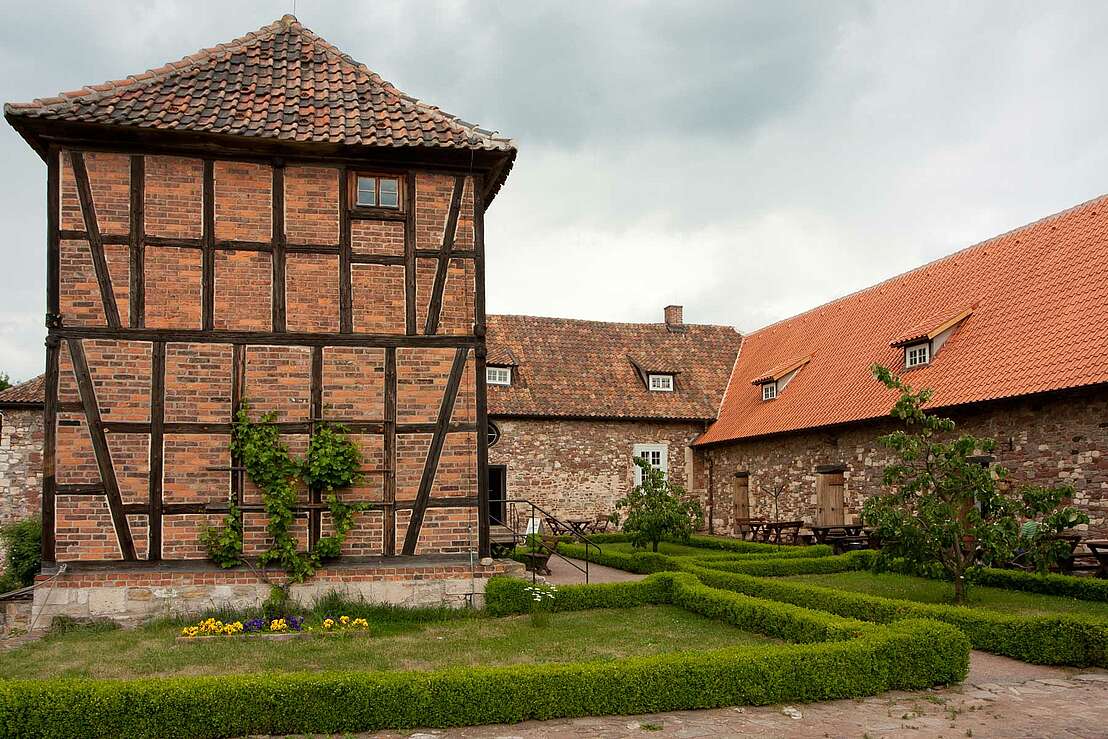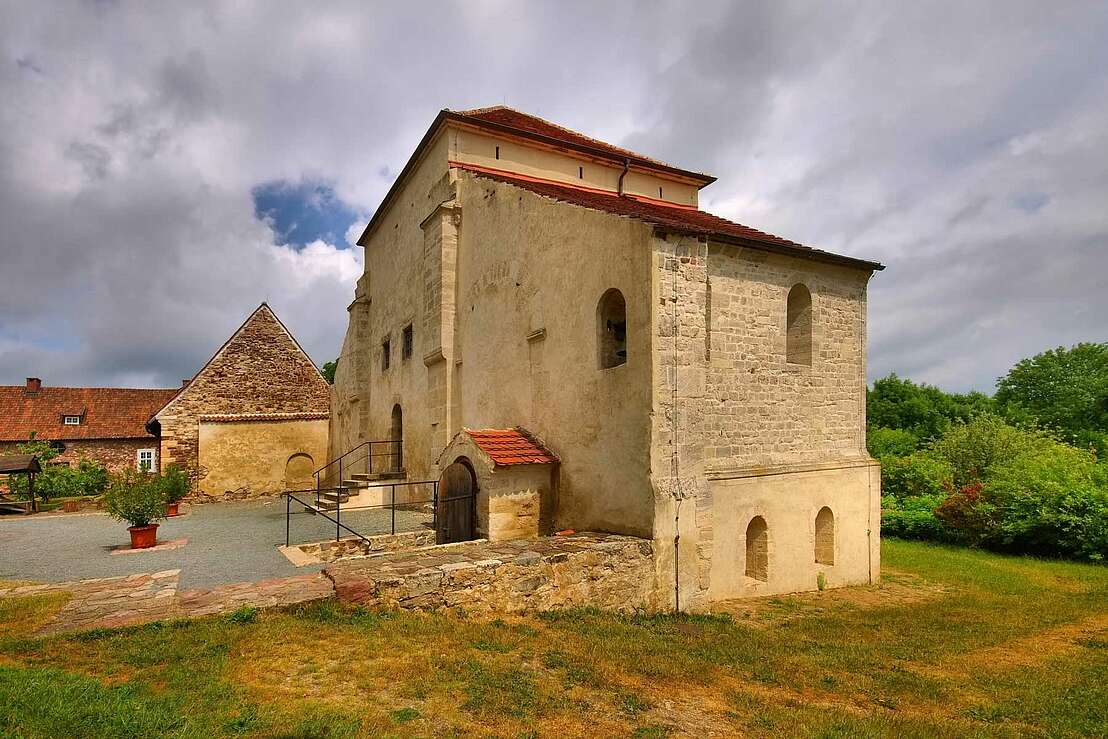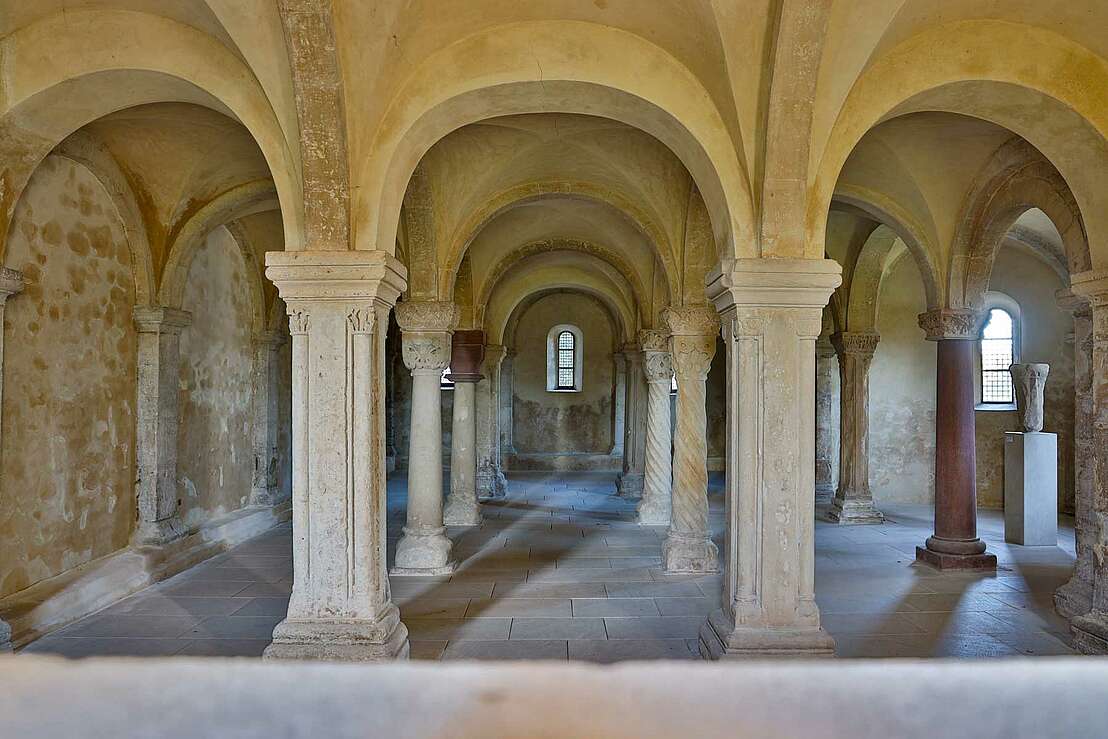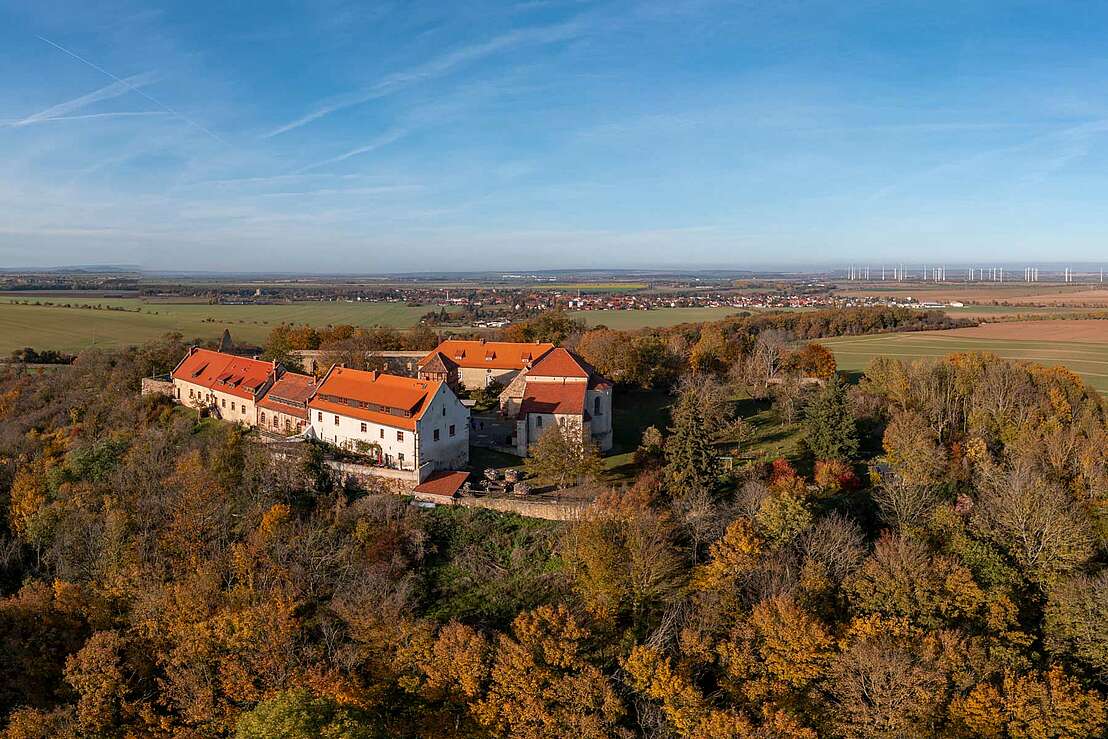Konradsburg
A monument of time - Konradsburg Castle near Falkenstein
Excursion destinationsHarzspots Vacation planner
| Name | Date |
|---|
Konradsburg Castle near Falkenstein is probably one of the most historically interesting places the Harz has to offer. What was already a castle and then a monastery in the course of history is said to have been settled by people for the first time as early as the Bronze Age. It was the Germanic tribes that built the first fortified complex here, and in the centuries that followed, the high castle always played an important role in the history of the region. Hikers in the Harz Mountains can not only get their 201 stamps in the Harzer Wandernadestamp book, but can also visit some well-preserved remains from the castle's history in past centuries.
From fortified complex to the home of the von Konradsburgs
Excavations from the region show that people first sought shelter here as early as the Bronze Age. However, not much remains of these first traces of settlement - which is mainly due to the modern history of the site. It was the Germanic tribes that are said to have offered sacrifices to their pagan gods here in earlier times. Typical of later times and the Christianisation that was taking hold in the area of the Germanic tribes, a church was later built here, which was to become the foundation stone for the later monastery after the castle was abandoned.
Written proof of the castle's existence was first found in 1040, when it was mentioned in connection with the von Konradsburgs in a document concerning the castles of the region. Situated at an altitude of 236 metres, the castle was perfect for defending the surrounding lands. Some outlines of the fortifications can still be seen today and one or two foundations of the once fortified complex have also been rediscovered in the course of research work in recent years. However, there is hardly any evidence of a real castle today - this is also due to the fact that the castle was probably abandoned as early as 1120.
The transformation from castle to monastery
The noble family that had previously controlled the castle had given itself the appropriate name of the "von Konradsburger" and was also known by this name. However, at the beginning of the 12th century, they built the Falkenstein castle complex - another popular destination in the Harz Mountains and also another part of the Road of Romanticism - and decided to move. Thus the dynasty of the "von Konradsburg" became the dynasty of the "Falkensteins". The castle itself had no real purpose for the family from this point on.
Why the castle eventually ended up in the possession of monks is not known for certain. One legend says that there was a feud between two families and that after the bloody murder of Adalbert von Ballenstedt by Egeno von Konradsburg, the castle was finally handed over as atonement. Whether there is any truth in this legend can no longer be said with certainty on the basis of today's traditions. What is certain, however, is that the castle stood empty for some years and was converted into a Benedictine monastery from the 1130s onwards.
While the monastery probably experienced its economic heyday in the late 12th and early 13th centuries - the impressive church of St. Sixtus was also built during this period - the monastery complex remained an important centre in the Harz region in the aftermath, at least culturally. With the upheavals of the 14th and 15th centuries, however, the monastery lost importance and was temporarily abandoned. Even the revival by Erfurt Carthusians in 1477 only changed this for 50 years. With the Peasants' Wars in 1525, large parts of the former monastery were burnt down and it was then finally abandoned for use.
The monastery today - what is there for visitors to discover?
In the middle of the 18th century, the monastery - now largely dilapidated - was freed up for economic purposes. Unfortunately, this also led to many of the former buildings that were still preserved being misappropriated. The crypt became a pigsty, parts of the former church were used as a workshop and many of the buildings still visible today were built during this time as part of agricultural facilities. The decay of the entire site was finally halted in 1982 by a citizens' movement, and a long and complicated restoration began on the parts of the former monastery that were still standing at that time.
Of particular interest to visitors should be the aforementioned crypt and the still preserved choir of the former church. On the grounds, an attempt was also made to show the very changeable history from Konradsburg to the monastery and to illustrate it with the remaining elements. The former castle well with a corresponding system for pumping water is also well worth a look. The crypt is also considered to be one of the best-preserved late Romanesque buildings that can still be admired in this form in the Harz Mountains.
Today, the entire site is used for a wide variety of events and it is mainly volunteers who run a small café here, for example, and provide a gallery for artists. So if you are in the area and want to see one of the most interesting historical testimonies of the region, you should definitely consider a visit to Konradsburg.
Konradsburg 2
06463 Falkenstein/Harz
Harzspots gives you the
Komoot Harz Region Package for free!
Use our voucher from the Outdoor Navigators Komoot and get the „"Harz Regions Package“ free of charge. From now on you can get to know all hiking and cycling routes digitally and, if you wish, also voice-guided!



